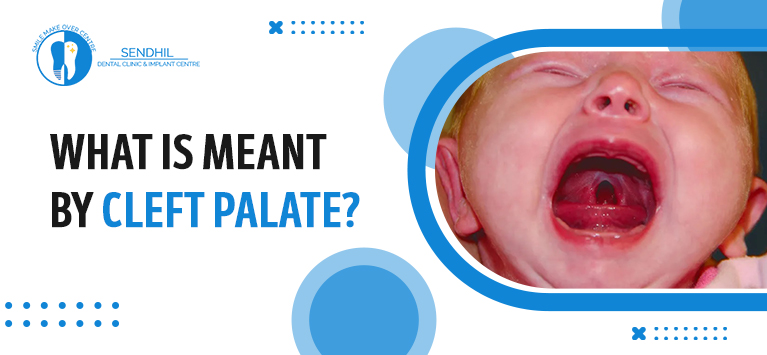
What is meant by cleft palate?
Cleft Palate refers to the opening in the roof of the mouth. It is a birth defect that starts in the fetus’s development stage itself. The problem primarily occurs when the palate structures do not join properly in the middle. If a child is born with such split in his/her palate, the child would develop speech problems, problems with the adenoids, tonsils, teeth problems, etc.
This condition is similar to cleft lip. Occasionally, some kids get problematic gaps in their palates and lips. Luckily, you can get curative solutions from your dentist to rectify this problem.
What causes cleft palate?
The root cause of such openings in the palate is unknown. However, dentists and medical researchers believe that newborns get cleft palate due to genetic and environmental factors. We discovered that most of the individuals we treated had a family history of this condition.
In particular circumstances, medications taken during pregnancy also contribute to cleft palate. Overexposure to radiation or chemicals during pregnancy also causes such clefts. Moreover, the cleft may arise due to the following conditions:
- Obesity
- Vitamin deficiencies
- Smoking during baby development in the womb
- Misusing drugs
What are the different types of cleft palate?
The cleft palate is classified into 2 types as follows:
- Complete Cleft Palate – It occurs in both the soft and hard palate. Generally, the complete cleft palate occurs just behind the front teeth and is extended to the end of the mouth roof.
- Incomplete Cleft Palate – It usually occurs in the soft palate region and gets extended forward.
How does a cleft in the palate affect dental health?
The roof of a mouth is comprised of hard palate and soft palate.
- Hard Palate – It is defined as the bony part of the mouth’s roof and forms the front part of the palate. The major role of this palate is to separate the nose from the mouth. Moreover, it allows the tongue to move freely inside the mouth.
- Soft Palate – This refers to the flesh part of the palate. It is comprised of muscles that play crucial parts in breathing, swallowing, and pronunciation. The soft palate becomes tensed and elevated due to the muscles moving up and down for activities like eating, chewing, and others.
When there is a cleft in the hard palate or soft palate, it will have negative effects on the child’s health more than you think.
The cleft in hard palate opens a way between the kid’s mouth and nose. In such cases, food items will go up the nose. Likely, this opening allows air to go out of the nose, instead of the mouth. It affects the way the kid speaks. Likewise, the cleft in soft palate also keeps the air out of the nose. It also causes speech impairment.
As the soft palate is responsible for pushing the foods to the back of the throat, a split or opening in this region will negatively influence the child’s eating behavior.
In essence, a cleft in the palate affects how a kid will eat, chew, swallow, talk, and even breathe.
How do dentists repair cleft palate?
The cleft palate is treated with a surgical procedure called Palatoplasty. Besides closing the space formed due to improper fusion of palatal structures, the surgery aims at closing the gap between the nose and teeth formed.
It shows that this surgery aids in addressing cleft palate-related problems with speech, breathing, and eating. The steps in this procedure involve:
- An incision is made on each side of the palate.
- Then the oral surgeon will rearrange the muscles of the soft palate. It ensures that the child can speak efficiently.
- Then the cleft is closed.
This surgery takes around 2 to 3 hours and the child has to spend 1 or 2 days in the hospital.
Are there any risks associated with cleft palate surgery?
Once the surgery is completed, make sure the child follows the necessary instructions your dentist prescribed. It will not pose the patient at any risk in most cases. However, visit your dentist immediately if you notice any of the following signs after cleft palate repair surgery:
- Chronic pain in the surgical site
- Skin color changes in the palate
- Bleeding from the scar
- A foul smell emits from the mouth
- Body temperature exceeds more than 38. Degree Celsius.
- Dehydration
- Feeling tired and exhausted
Bottom line
Cleft palate is one of the most common birth defects but it should be addressed soon. Otherwise, it provokes various dental issues and other problems like speech impairments, hearing loss, eating problems, eye problems, and so on. Hence it is mandatory to repair such openings in the palate when a kid is 10 to 12 months old.
Have queries regarding this condition? Ask our dentists in the comment section or call us at +91-9600091767.



